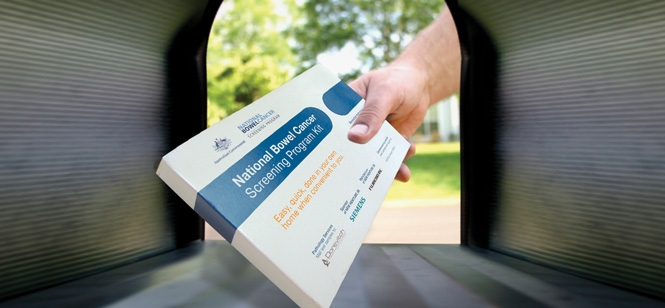Here's how the most recent national screening program works
Australia has three national screening programs: mammography for breast cancer, pap smear screening for cervical cancer and, most recently, bowel cancer screening.
In this 15-minute video Marc Gladman, professor of colorectal surgery at the University of Sydney, explains how screening for bowel cancer works.
“[Bowel cancer screening] uses a faecal occult blood test,” he says.
A stool sample is collected at home by the patient and posted to laboratories where the sample is analysed.
“Many of the tests come with a small, flushable mat that is laid in the toilet before emptying the bowels and that will prevent the stool disappearing in the toilet,” says Professor Gladman.
“Having placed the mat in the lavatory, the patient empties the bowels, they then take the sample that comes within the kit to take a small specimen of the motion that’s in the lavatory.
“That’s then placed within the collection tube provided and that in turn is placed in what is called a transportation system. And that is all packaged up and then sent back via the post and returned to the laboratory for analysis.”
Patients should collect two samples on consecutive days, he says.
“We’ve got to get the balance between compliance and the patient actually willing to undertake the test and also to increase the sensitivity of the test,” explains Professor Gladman.
The bowel cancer screening test is designed to detect trace amounts of blood in the stool, which are often not visible to the naked eye.
If the test is positive, the patient can then go for further testing.
By 2038 the national screening program will be rolled out for all people between the ages of 50 and 74 years of age. People eligible for screening, which includes only those without symptoms, should take the test every two years.


